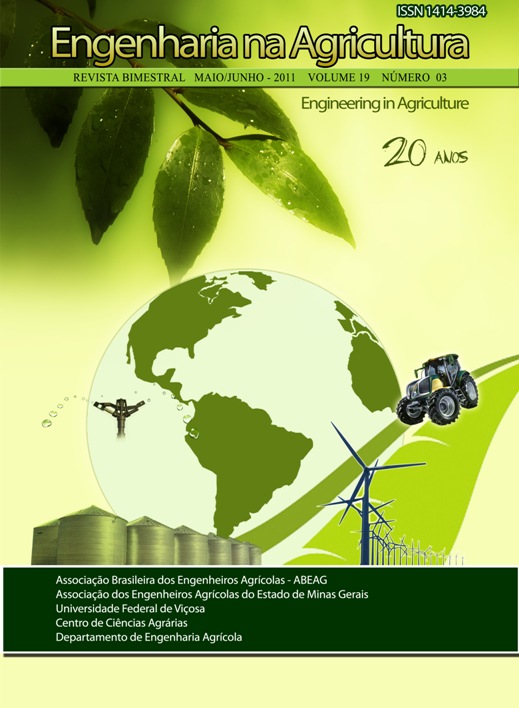USE OF MULTIVARIATE SPATIAL ANALYSIS TO EVALUATE SOIL FERTILITY
DOI:
https://doi.org/10.13083/reveng.v19i3.181Keywords:
geoestatística multivariada, modelo linear de corregionalização, agricultura de precisãoAbstract
The spatial variability of soil attributes can be influenced by several factors such as soil formation (parent material, topography, vegetation, climate, and time), cultural practices (tillage, crop rotations, and fertilization), and erosion. Therefore, appropriate techniques are required to identify the variables that affect certain soil processes to improve soil management, liming and fertility practices in a farm. This study was done to demonstrate the applicability of multivariate geostatistics techniques to investigate the behavior of Phosphorus (P), Potassium (K) and Organic Matter (OM) in a 70 hectares experimental area in Araguari, Minas Gerais State, Brazil. These soil constituents were analyzed with the use of linear coregionalization model. Direct and cross p(p+1) variograms are adjusted, and then fractioned into principal components. The results showed a larger spatial influence of the variable P at micro and middle scale and shared influence of variables P and K at long scale. Due to the agronomical practices the influence of OM was small in the combined behavior of these constituents. P and K showed higher spatial dependence because of continuous applications of these fertilizers for soybean and corn cultivation. The results established a minimum limit of 320.18 meters for delimitating management zones for variable rate fertilizer zones.Downloads
Downloads
Published
How to Cite
Issue
Section
License
Authors who publish with this journal agree to the following terms:
The author(s) authorize(s) the publication of the text in the journal;
The author(s) ensure(s) that the contribution is original and unpublished and that it is not in the process of evaluation by another journal;
The journal is not responsible for the views, ideas and concepts presented in articles, and these are the sole responsibility of the author(s);
The publishers reserve the right to make textual adjustments and adapt texts to meet with publication standards.
From submission, the author is fully conceding the paper's patrimonial rights to the publication, but retaining the owner of its moral rights (authorship and paper's identification) according to Creative Commons Attribution-Noncommercial.








 Licensed by
Licensed by 